Dwarf Duck-billed Dinosaur with Facial Tumour
Scientists have identified the first recorded evidence of a benign facial tumour in the fossilised jaw bone of a duck-billed dinosaur (Telmatosaurus transsylvanicus). This dinosaur died before adulthood, it is not known whether the facial tumour contributed to this dinosaur’s demise.
The paper published in the journal “Scientific Reports”, was written by an international team of scientists, which included PhD students Mihai D. Dumbravă (Babeș-Bolyai University, Romania) and Kate Acheson (Southampton University), along with Dr Zoltán Csiki-Sava (University of Bucharest, Romania), who led the field trip that found the jaw bones of this unfortunate reptile. The facial tumour known as an ameloblastoma is a non-cancerous growth known to afflict mammals and reptiles, including our own species too. This is the first time such a deformity has been documented in the fossil record.
An Artist’s Impression of the Juvenile Telmatosaurus with the Facial Tumour on the Left Dentary
Picture credit: Mihai Dumbravă with additional annotation by Everything Dinosaur
Commenting on the significance of the discovery, student Kate Acheson stated:
“This discovery is the first ever described in the fossil record and the first to be thoroughly documented in a dwarf dinosaur. Telmatosaurus is known to be close to the root of the duck-billed dinosaur family tree, [Hadrosauridae] and the presence of such a deformity early in their evolution provides us with further evidence that the duck-billed dinosaurs were more prone to tumours than other dinosaurs.”
Telmatosaurus – A Primitive Member of the Hadrosauridae
The basal hadrosaur Telmatosaurus lived on the Hateg archipelago, a series of islands in the middle of the Tethys Sea. A number of different dinosaurs are known from the Hateg Island group and the fossils of Telmatosaurus date from around 69-67 million years ago (Maastrichtian faunal stage of the Late Cretaceous). Like many of the prehistoric animals known from these deposits, the four-metre-long Telmatosaurus exhibits “island dwarfism”, a lack of resources led to a decrease in the size of individuals within the population.
An Illustration of Telmatosaurus (T. transsylvanicus)
Picture credit: Mihai Dumbrava
For models of hadrosaurs and other dinosaurs: PNSO Age of Dinosaurs Models and Figures.
Deformed Dinosaur Jaw Fossil
The fossil jaws were discovered more than ten years ago. Comparison with other Telmatosaurus jaw material indicated that the lower portion of the left dentary was deformed. The reason for the deformity was not made clear until the fossil was subjected to high resolution scans at the Switzerland based SCANCO Medical AG. Scans revealed that the juvenile Telmatosaurus had been suffering from a condition known as “ameloblastoma”, a benign tumour which is known to affect the jaws of mammals and some modern reptiles.
Scans Reveal the Presence of an Ameloblastoma in a Dinosaur Fossil
Picture credit: Scientific Reports
The picture above shows (A) the two lower jaw fossils (dentary) of the Telmatosaurus in frontal view (anterior). The abbreviation exo on the left jaw indicates the position of the tumour growing on the bone (exostosis). Computer model (B) shows the left jaw bone with elements colour coded, for example, red shows the primary neurovascular canal, yellow the secondary neurovascular pathways, orange – functional teeth, blue – replacement teeth, light blue – segmented dentary bone, purple – lytic density areas. Pictures C and D show three-dimensional micro CT scan images with a rectangular section cut out to show the exostosis (C) and (D), the portion of the dentary showing the external exostosis.
Close up Examination of the Fossil Bone
Picture credit: Scientific Reports
Assessing the Dinosaur Data
In the image above, (E) shows a cross-section of the jaw, with a highly magnified section (F), in the picture labelled “Scans Reveal the Presence of an Ameloblastoma in a Dinosaur Fossil”. The middle image (G) is a cross-section of a second micro-CT and (H) provides a close up detail of that section. Image (I) represents a cross-section of another CT image and (J) is a radiograph of the left dentary of a person exhibiting an ameloblastoma and (K) a further image showing a left jaw (H. sapiens) with an ameloblastoma.
Abbreviations:
cb = cortical bone; cbe = cortical bone expansion; cbt = cortical bone thinning; dt = dentary tooth; exo = exostosis; im = internal margin; itrb = internal trabeculae; lda = lytic density areas; mgr = mandibular groove; pnvc = primary neurovascular canal; rb = resorbed bone; rt = resorbed tooth; rtr = resorbed tooth roots; sba = soap bubble appearance; snvc = secondary neurovascular pathways.
Scale bars (A,B): 50 mm. Scale bars (C–I): 5 mm. The scale for (J,K) not reported.
The Placement of Telmatosaurus within the Hadrosauridae
A Simplified View Showing the Approximate Placement of Telmatosaurus within the Hadrosauridae
Picture credit: Everything Dinosaur
Visit Everything Dinosaur’s award-winning website: Everything Dinosaur.
Mihai D. Dumbravă explained:
“It was expected, due to the impoverished nature of the fauna, that our project to investigate diseases of the bone in the dwarf dinosaurs of the Haţeg County Dinosaurs Geopark would reveal some interesting results, but the discovery of a rare modern tumoural condition, and one that is so far unique in the fossil record, was a wonderful surprise.”
The Cause of Death?
As only the jaws of this dinosaur have been discovered, it is not possible to determine the impact of the ameloblastoma on the animal’s life. However, Dr Zoltán Csiki-Sava, another of the authors of the scientific paper postulated:
“We know from modern examples that predators often attack a member of the herd that looks a little different or is even slightly disabled by a disease. The tumour in this dinosaur had not developed to its full extent at the moment it died, but it could have indirectly contributed to its early demise. The particular make-up of the rocks allowed us to identify that this fossil was preserved near the channel of an ancient river.”
Student Kate Acheson added:
“In a setting like this, it is extremely rare to find the complete specimen, and so it is almost impossible to determine the specific cause of death. One can only make an informed guess based upon the evidence we have.”
The academic paper published in the journal “Scientific Reports” and it is entitled:
“A dinosaurian facial deformity and the first occurrence of ameloblastoma in the fossil record.”


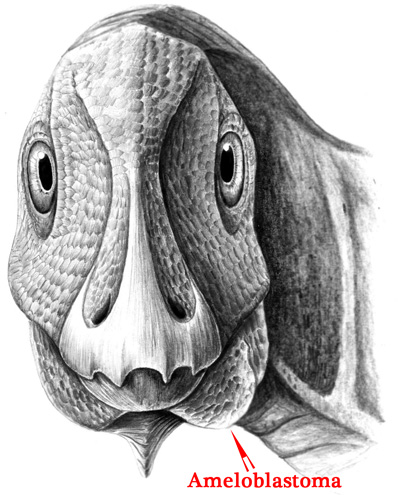
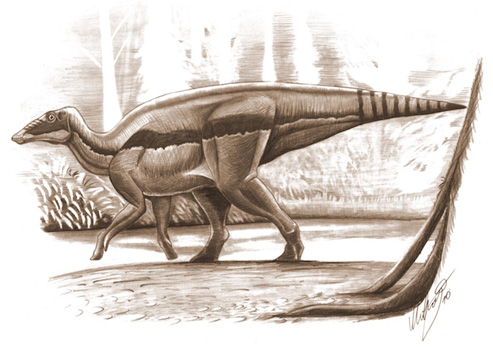
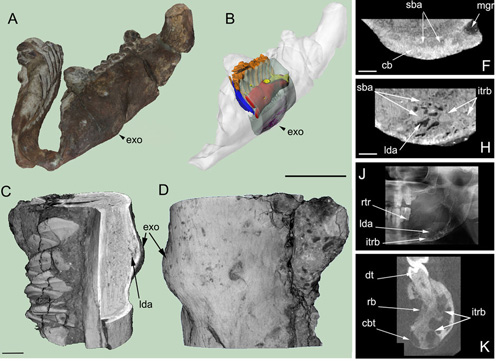
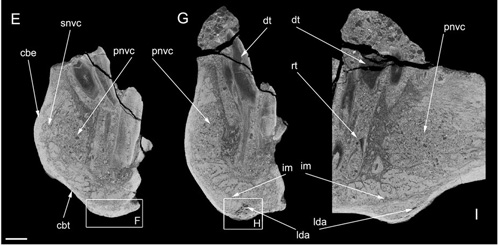
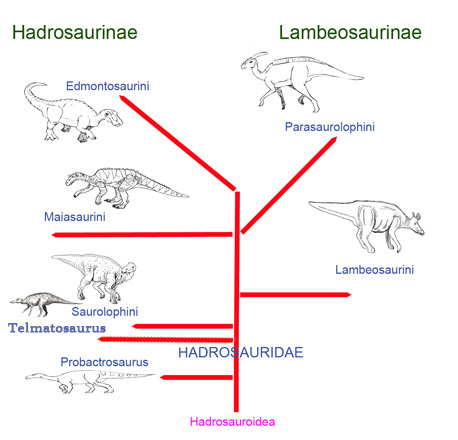




Leave A Comment